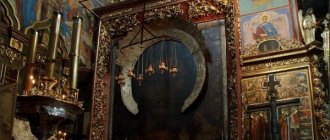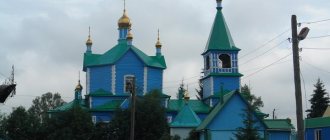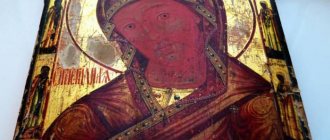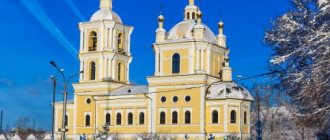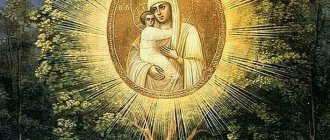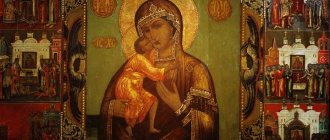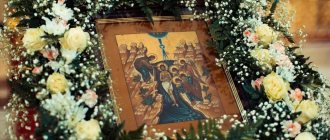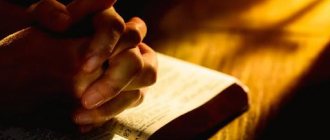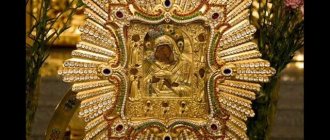The Resurrection Cathedral in Tutaev is a special place. Formally, the cathedral was built in 1678. However, the first temple on this site, popularly called Borisoglebskaya Sloboda, appeared back in 1238 in honor of the holy princes Boris and Gleb. According to legend, until the construction of the current cathedral, there was always a monastic monastery here, which creates a special atmosphere.
For a long time, the left and right banks of the Volga were independent settlements, until in 1822 they were united into one city - Romanov-Borisoglebsk, and a hundred years later they were renamed to modern Tutaev.
Due to its elevated location and its powerful dimensions, the Resurrection Cathedral is a kind of dominant feature of this part of the city. The height of the cathedral to the top of the cross is almost 50 meters. The temple was created and painted by Yaroslavl masters, who knew how to maintain the harmony of their architectural creations even on such a majestic scale.
The altar part of the temple faces the river and the power of the cathedral is especially noticeable if you look at it from the water or from the left bank of the Volga. These views at one time incredibly inspired the artist Boris Kustodiev. For example, in his painting “Walking on the Volga” the Resurrection Cathedral appears as a very important semantic point.
© Lyudmila
The cathedral is extraordinary from many points of view. Its unusual external design, rich interiors, and ancient icons leave no one indifferent. Even more surprising is that the temple never closed.
Over the several centuries of its existence, it has survived wars, revolutions, an era of repression, when many of the cathedral community disappeared in camps and exile, then the inculcation of atheism, and privatization. And all this time the temple remained operational - church services, baptismal ceremonies, and funeral services were held there weekly.
In addition, the temple managed to preserve all of its interior decoration, which is also practically unique - there are literally only a few such Orthodox churches in Russia.
There are two churches on the territory of the Resurrection Cathedral: the upper one (it is also called “summer”, access there is really only possible in summer) and the lower one (“winter”).
The ensemble of the “winter” church includes a tented bell tower, the Holy Gate, a fence, an altar pillar, and a guardhouse. All of them were built between the mid-17th and early 20th centuries. The “Summer” temple is famous for its murals. Both temples contain unique fresco paintings, magnificent portals decorated with carvings, centuries-old icons and other relics.
Bell ringing of the Resurrection Cathedral in Tutaev (video)
Notes[ | ]
Comments
- An image in the iconography of Jesus Christ, belonging to the “Pantocrator” iconographic type, a characteristic feature of which is the image of the Lord’s blessing right hand and a book or scroll in the left. Monumental images of the Savior of the main or shoulder type became widespread in the iconography of Ancient Rus' starting from the 14th century. In the iconostasis of the 16th-17th centuries they were located in the lower (local) row - on the right side, south of the Royal Doors.
- Completely different proportions are given by Yaroslavl local historian, journalist and writer K. D. Golovshchikov. He names the dimensions as 4 arshins 2 vershok (height) by 2 arshins 12 vershok (width).
- This is the most ancient place for placing images of this iconographic type.
- According to K.D. Golovshchikov, in 1889, among the 6,425 residents of Romanov-Borisoglebsk there were 1,683 Old Believers of various movements and 721 fellow believers.
- In Old Believer chapels and prayer houses, ancient icons of similar iconography or copies from them could be in the center of the iconostasis, replacing the Royal Doors (Fedoseevsky prayer houses), or occupy the same place that they were given in Old Russian churches. Quite often, special icon cases were made for such icons and installed on the southern side of the temple (for example, in the Church of the Intercession of the Blessed Virgin Mary at the Rogozhskoye cemetery) or directly near the southern pillar.
- K. D. Golovshchikov, in an essay on the history of Romanov-Borisoglebsk, published in 1890, claimed that in 1793 this icon first arrived in the city from Rostov, but admitted that he was unable to trace its history until that moment.
- Kovat is one of the tributaries of the Volga. The source (N 57°50.476′ E 39°32.901′) is located approximately 4 km south of the right bank Tutaev. Currently, the spring has been turned into a well. A pipe with a diameter of approximately 1 m goes to a depth of 1.5 m. A font is made next to the well, into which water is supplied through a gutter. The bottom of the Kovat River in the area of the spring is paved with cobblestones.
- It is in this place that it is located at the beginning of the 21st century.
- K. D. Golovshchikov called the weight 2 pounds 9 pounds 66 spools.
- In 2011, the publishing house “Father's House” published a photo album dedicated to these religious processions.
- Authors of the 19th and early 20th centuries do not mention a similar tradition of crawling under an icon in a church or during a religious procession.
Sources
- ↑ 12345
Semyonova, 2022, p. 52-53. - Kondakov, 1905, p. 59-60.
- Pripachkin, 2001, p. 26.
- Encyclopedia, 2002, p. 105.
- Yukhimenko, 2012, p. 219.
- ↑ 123456
Telyakovsky, 1991, p. 66. - ↑ 12345678
Mikheev, 2012. - Alekseev, Zaretsky, Tyukavin, 1964, p. thirty.
- ↑ 12
Shamurin, 1912, p. 72. - ↑ 12
Shamurin, 1912, p. 71. - ↑ 123456
Khokhlova, 2005, p. 154-155. - Handful, Erokhin, 2022, p. 19-20.
- Nefedieva, 2022, p. 43.
- ↑ 12345
Golovshchikov, 1890, p. 49. - Shamurin, 1912, p. 70.
- Gnedovsky, Dobrovolskaya, 1980, p. 290.
- Gerchuk, Domshlak, 1976, p. 133.
- Zhukova E. F.
Tutaev (Romanov-Borisoglebsk).
Borisoglebskaya side (undefined)
. Echo of Moscow (January 14, 2013). Retrieved September 17, 2022. Archived September 5, 2022. - Kondakov, 1905, p. 59.
- Golovshchikov, 1890, p. 35.
- Yukhimenko, 2012, p. 219-220.
- Semyonova, 2022, p. 53.
- ↑ 12345
Telyakovsky, 1991, p. 67. - ↑ 12345
Semyonova, 2022, p. 54. - “Holy Spring” on the Kovat River (undefined)
. Portal Tutaev 360°. Retrieved August 1, 2022. Archived April 8, 2022. - Semyonova, 2022, p. 55.
- ↑ 1234
Semyonova, 2022, p. 56. - Album, 2011, without page numbering.
- Tsehanskaya, 2004, p. 209.
- Tsehanskaya, 2013, p. 337.
- Telyakovsky, 1991, p. 66-67.
- Shamurin, 1912, p. 70-72.
- Khokhlova, 2009, p. 304-305.
- Yukhimenko, 2012, p. 220.
Celebration in honor of the All-Merciful Savior and the Blessed Virgin Mary
On August 14, the Orthodox Church established a holiday that is celebrated in honor of the Savior and the Most Holy Theotokos. As for this event, it has a very rich and interesting history, which is associated with many saints. August 14 is the day when another celebration is celebrated, which is associated with the Origin of the Honest Trees of the Cross of the Lord.
Both events are connected with each other, as well as with the Baptism of Rus'. In the chronicle of the 16th century there are the following lines: “Vladimir the Great is our true ruler, for he himself was baptized, and then the whole of Kievan Rus.” Today we celebrate the holiday of the Baptism of Rus' on July 28, but earlier this event took place on the first of August. The fact is that on July 28, two holidays were combined at once, adding to the celebration of the Baptism of Rus', the memory of Prince Vladimir. Since 2010, these two holidays are considered state holidays in Russia.
The historical past of the holiday of the Savior and the Blessed Virgin Mary is associated with such personalities as Andrei Bogolyubsky and Tsar Manuel
If we take into account the chronicles of that time, it is written there that Andrei Bogolyubsky was on friendly terms with Tsar Manuel. When the war began, they went to war together, leading an army of trained soldiers.
After some time, their troops split up - Tsar Manuel attacked the Saracens near Constantinople, and the army of Prince Andrei Bogolyubsky went from Rostov to the Bulgarians. Unfortunately, at that time the Bulgarians were considered the most cruel and inveterate idolaters who, guided by their pagan principles, killed peaceful Christians and destroyed entire villages. They did not cease to pester Rus' with their raids, as a result of which it was decided to give them battle. Before the campaign, Prince Andrei and Emperor Manuel prayed with sincere thoughts to the image of the Most Holy Theotokos, and subsequently took with them the icon of the Mother of God, as well as the Sign Cross. The patronage of the Higher Powers was incredible, since both detachments received a brilliant victory, confirmed by the blessed radiance of the icon of the Mother of God, which was located in one of the churches of Constantinople. To thank the saints, as well as to honor their memory and remember the brilliant military triumph, the feast of the All-Merciful Savior and the Most Holy Theotokos was established in 1158. It is noteworthy that in some chronicles there is another date - mid-1164, but most often it is the first option that is mentioned.
Christians called this holiday completely differently. The most popular versions of parishioners are the First Savior, the Honey Savior or the Savior in the wild. As for the last option, it can be called Wet Spas in another way. It is worth noting that the name “Savior on Water” was not invented by chance, because even during the development of Constantinople there was a ritual during which rivers, lakes and other bodies of water were consecrated. This was done at the beginning of each month. It was believed that the monthly cycle also tends to renew itself, as a result of which the human soul is purified. Today in Russia such a phenomenon can be noticed once a year, and this is on the feast of the All-Merciful Savior and the Most Holy Theotokos. Many Christians sanctify reservoirs and wells, while cleaning old ones. Towards evening, a church service is held, during which people with priests walk through all natural bodies of water and consecrate them. At the end of the consecration, various foods prepared from honey are blessed for consumption. People bake pies with honey, make gingerbread and other sweets. This prompted many of them to come up with an alternative name for the celebration - Honey Savior.
We advise you to study Prayer before the icon of the Mother of God “Education”
Tutaev: sights of the city and the icon under which people crawl
50 km from Yaroslavl is Tutaev, a small provincial town with a centuries-old history. Before the revolution, it was called Romanov-Borisoglebsk, since it arose as a result of the unification in 1822 of the city of Romanov and Borisoglebskaya Sloboda. It received its modern name in 1918 in honor of private Red Army soldier Ilya Tutaev.
Over time, modern neighborhoods grew on the Borisoglebskaya (right) side. The Romanovskaya (left) side remains a charming provincial corner. But something remains in the Borisoglebskaya side. There stands there a real pearl of Russian spiritual architecture - the Resurrection Cathedral, in which a truly amazing shrine has been kept for many years: the icon of the Savior. The icon is not only striking in its size (2 meters 78 centimeters wide and 3 meters 20 centimeters high): it is miraculous. It is believed that the All-Merciful Savior helps with diseases of bones and joints, but this is not at all a matter of “medical indications.” This is a prayer icon. The “main” face of the Savior is dark, barely distinguishable (one can only see that the face of the Savior is not menacing, but filled with sorrow, His right hand blesses, and His left holds the open Gospel). And this is not surprising, because the icon is more than 600 years old. By the way, over these centuries no attempt has been made to weigh the icon; it is simply believed that 30 men are needed to carry it. To carry the All-Merciful Savior on a special stretcher, you need twice this number. Opposite the icon is an ancient fresco depicting the Last Judgment. Paintings painted on the wall of the Resurrection Cathedral with a symbolic image of the “infidel kingdoms”, all earthly peoples, torments beyond the grave, sins and demons are considered the most convincing in all ancient Russian monumental painting. Perhaps this is why the Savior looks at us with sorrow. In 1749, the icon of the Savior attracted the attention of Rostov Metropolitan Arseny, and he ordered it to be taken to his bishop’s house in Rostov. For 44 long years the icon was in forced exile. All these years the residents of Borisoglebsk fought for the return of the shrine, and finally in 1793 they achieved their goal. From Rostov the All-Merciful Savior was carried in their arms; not reaching the city three miles, they decided to wash the image from road dust in the Kovat River, after which a spring of clean water flowed in this place. This source still exists today, and the water in it has healing powers. From that time on, miracles of healing from physical ailments and spiritual diseases began to occur at the holy image. In memory of this event, a precious crown was made for the Savior, and the icon was decorated with a rich silver and gilded chasuble weighing more than 35 kg. The current crown is a copy of the original one, lost during the 1922 campaign to confiscate church valuables. Riza disappeared without a trace. The icon and the entire Resurrection Cathedral have been preserved almost in their original form to this day. The cathedral was never closed and services there were never interrupted. They say that a rumor spread among the Bolsheviks that if anyone even tries to touch the All-Merciful Savior with bad intentions, he will immediately die. The safety of the temple was also influenced by the fact that the parish of the Resurrection Cathedral numbered one and a half thousand people, and they were afraid to close it in order to avoid popular unrest. Once a year, the All-Merciful Savior goes on a long journey. He “goes” to visit the left bank, from Borisoglebsk to Romanov. The religious procession takes the whole day, because the Savior must bless every church on the Romanov side, of which there are six. The journey is not hampered even by the fact that you have to cross the Volga to the other side by ferry (there are no bridges across the great river in Tutaev). Carrying the Savior for 7 hours is not easy work, but you will not hear complaints and complaints from those who perform this obedience. For people this work is a joy. And for the residents of Romanov, the religious procession with the All-Merciful Savior is a great holiday. The housewives bring water outside to give the travelers a drink, and in the late afternoon, tables are set in the fence of the Archangel Church of the Savior and the Romanovites treat everyone (there are several hundred people, by the way!) to a hearty lunch. The Savior returns to his usual place in the evening, when the sun completes its daily journey. There is a long-standing tradition of crawling with prayer under the miraculous icon of the Savior on your knees. For this purpose, there is a special window in the icon case under the icon. In the board under the holy image, along which many people crawl every day, over the course of two centuries, it was as if two ruts had been worn out. This relieves many illnesses, problems and just mental pain.
Description of the Holy Face
The image of the All-Merciful Savior belongs to the “Pantocrator” iconographic type. There are full-length, half-length and full-length images. The author of the original was a follower of the famous Russian icon painter Andrei Rublev.
There is some discrepancy in the proportions of the Savior's hands in relation to the rest of the body. Researchers explain this by saying that the artist initially planned to paint a different type of icon.
Icon of the All-Merciful Savior in the Cathedral of the Resurrection of Christ (Tutaev, Yaroslavl region)
The icon has a very impressive size. Its width is 2.78 m and its height is 3.20 m.
It depicts the face of Christ, crowned with a crown of fine workmanship. Over time, the image darkened greatly. This is due to a tradition that existed many centuries ago - covering paintings with sunflower oil to fix the paints. The icon was not cleaned of the oil layer in our time and was left in its original form.
About icons in Orthodoxy:
- Rules for storing Orthodox icons
- Icon veneration in Orthodoxy
- Who paints icons for the church
It is believed that a person who does not believe in God is not able to see his face on the icon. The Lord reveals himself only to spiritual vision.
Interesting! There is an opinion among the laity that a wife who has cheated on her husband at least once will not be able to discern the face of the Almighty in the image.
Prayer text
In front of the most holy image of Christ, it is customary to pray for forgiveness of sins, salvation of soul and body, and protection from enemies. The Holy Lord is begged to help overcome everyday difficulties, protect relatives from danger, and grant health and a comfortable life.
People suffering from physical and mental illnesses pray before the icon of the All-Merciful Savior. Prayers to the most holy Lord work miracles. People recover and thank Christ for their healing and miraculous salvation.
In the prayer text read in front of the most holy icon, believers glorify Jesus and ask him for mercy and grace. Holy prayer to the Lord helps people find peace of mind and consolation in sorrows. Believers, having sincerely repented of their sins, receive the protection and intercession of Christ the Savior.
What does it help with?
People pray in front of the icon of the All-Merciful Savior in various life situations and health problems. A particularly miraculous image helps with the following:
- Diseases of the musculoskeletal system and joints;
- Helps in strengthening faith and gives strength;
- Helps in repentance and gives humility.
Tip #1 Do not consider the image a talisman against any diseases or troubles. The icon itself cannot give grace; it is given by the Lord, subject to sincere repentance, humility and prayer to Him.
Story
The city of Romanov-Borisoglebsk, Yaroslavl region (since 1918 - Tutaev) includes once independent cities located on the opposite banks of the Volga and united in 1822. On the right bank is Borisoglebsk, the former Borisoglebskaya Sloboda, on the left bank is the town of Romanov. On the Borisoglebskaya side stands one of the most majestic churches of the 2nd half of the 17th century - the Resurrection Cathedral, built in the traditions of Yaroslavl temple architecture.
The Resurrection Church was built from 1652 to 1678 on the site of the dilapidated wooden temple of Boris and Gleb, after which the settlement was named.
The construction of the Resurrection Cathedral took place during the initial period of the schism, and Romanov, neighboring Borisoglebskaya Sloboda, was one of the centers of the Old Believers.
After the construction of the cathedral in the settlement, some of the dilapidated churches of the settlement were dismantled, the decoration of which was transferred to the cathedral. Therefore, there are objects there that are older than the building itself. In the 18th century, the top of the bell tower was rebuilt, as a result of which it became somewhat lower.
The temple was not closed under Soviet rule; most of the interior decoration, iconostasis, and paintings have been preserved.
How to pray in front of an icon
You can pray in front of the icon of the All-Merciful Savior in a church or at home, the main thing is that nothing distracts you from prayer. It is necessary to tune in to prayer, come to a sense of humility and repentance. You can light a candle or lamp and make the sign of the cross.
First, you can read the text of the prayer of this icon.
Prayer before the icon of the All-Merciful Savior
Good Lover of Mankind, Most Merciful Lord, who bore our illnesses and healed us with Your wounds. Before Your Majesty, we bow and humbly pray to You: look, O Compassionate One, upon Your servants; and just as in ancient times You healed the weakened, so now, O Good Healer, with Your mercy and generosity, visit Your servants, and heal our sinful illness. Transform our mental and physical ailments into health, transform our infirmities into strength, transform our sorrows into joy and transform our sorrow into consolation. Take away from us all despondency and oblivion, strengthen our minds and confirm them to always learn from Your commandments; Correct all our lives so that we may do Your good and perfect will, for You are the healer of our souls and bodies and we send glory to You forever and ever. Amen.
We advise you to study How to celebrate the New Year during Lent and not sin?
Then you can turn to the Lord in your own words, mentioning all your needs in your petition.
The meaning of “Savior Not Made by Hands” in Orthodoxy
The significance of the icon “Savior Not Made by Hands” is very high for the entire Christian world. This is the standard image of the Savior, accepted throughout Christianity.
Firstly, the miraculous image clearly indicates that Jesus Christ is indeed a real historical person. The Savior is one of the hypostases of the Holy Trinity, who descended to Earth and took on human form.
The image of an ordinary person could not be imprinted on the fabric forever without any intentional influence, and the short-lived material had to decay and crumble into dust over the centuries. Only a Divine personality can perform such miracles.
Gold pendant “Lord Almighty Savior” (go to the SUNLIGHT catalogue)
This indirectly confirms the postulate that icon veneration is truly justified and has nothing to do with idolatry.
The Savior Not Made by Hands has been revered in Rus' since ancient times. Many lists were made of the image, and its veneration was supported at the state level. Many churches and monasteries were consecrated in honor of the icon.
The Savior Not Made by Hands was also present in secular life. He was depicted on the banners with which Russian troops went to battle since the time of Dmitry Donskoy, on all kinds of coats of arms and other symbols. Even now, the Savior Not Made by Hands flaunts on the flag of the Penza region.
Meaning of the icon
The image of the All-Merciful Savior is highly revered throughout the Orthodox world. Over the course of several centuries, numerous lists were made from it, which were distributed to monasteries and churches.
Icon "The All-Merciful Savior"
Religious processions are held with this icon, and the number of pilgrims who come to ask for help only increases from year to year. All this suggests that the ancient image of Christ the Savior still helps believers, and the Lord answers their prayers made in front of the image.
Icon of the All-Merciful Savior in Tutaev
In many churches of Rus' one could find the most holy image of Christ the Savior, blessing the believers. Christians prayed before the icon of the All-Merciful Savior and received God's mercy in return. The most holy image began to be revered as miraculous.
The most holy image was created around the 15th century. According to one version, it is believed that the ancient icon sailed to Tutaev along the Volga in a boat.
This shrine also has another name - “Savior Borisoglebsky” or “Romanovsky”. The fact is that Tutaev used to be called Romanovo-Borisoglebsk. The most holy image, located in the Resurrection Cathedral for many centuries, is considered miraculous. Prayers to him heal sore limbs and joints. Believers crawl on their knees to the shrine, pray in front of it and receive God's mercy.
The dimensions of this ancient icon are impressive - about 3 meters in height and width. This is a bust-length image of Christ, enclosed in a carved frame and chasuble (crown). The image of the Savior is made in dark colors. In one hand Jesus holds the open Gospel, and with the other he blesses the believers. In days of severe misfortunes and illnesses, residents of Tutaev come to pray to the shrine and receive God's grace.
History of appearance
The iconographic type of a single image of the Savior Almighty itself originated at the dawn of Christianity. This kind of fresco can be seen in ancient Roman catacombs. Starting from the 4th century, Byzantine icon painters began to depict Christ the Savior on temple icons, holding the Gospel in one hand, and blessing people with his other hand. With the baptism of Rus', a holy image of such content appeared in Russian churches.
In the 12th century, thanks to prayers to the icon of the All-Merciful Savior, Russian troops under the leadership of His Serene Highness Prince Andrei Bogolyubsky managed to defeat the Volga Bulgarians. In honor of this event, a church holiday was established on August 1 (14), as a reminder of the mercy given by God. Since then, believers in Rus' began to decorate churches, monasteries and chapels with icons of the All-Merciful Savior. The laity placed the most holy image of Christ the Savior in the center of the home iconostasis.
Tutaev - two banks of one river
The history of the city's origins is not entirely ordinary. Local residents are proud of their small homeland and say that the city was built on seven hills, on seven springs and on seven ravines. First, back in the 14th century, the city of Romanov arose on the left bank of the Volga, which was founded by Prince Roman Yaroslavsky.
Much later, about 100 years later, the Borisoglebskaya Sloboda became famous on the right bank of the Russian river, where in the 17th century the fantastically luxurious Church of the Resurrection of Christ was built from stone.
Later, by decree of Catherine the Great, the settlement became a city, which also had its own coat of arms.
And in 1822, these two cities merged into one: Romanov-Borisoglebsk. In fact, these are still two different cities on different banks of the Volga, only they have the same name.
But there has never been a bridge crossing the river. And no one knows when the crossing will be opened in Tutaev. For more information on modern methods of transportation between the Volga banks, see the end of the article.
How to get to the Resurrection Cathedral in Tutaev
To get to the Resurrection Cathedral, you need to get to Tutaev. The nearest large cities are Yaroslavl and Rybinsk. Both cities are connected to Tutaev by good bus services.
Regular buses depart from Yaroslavl to Tutaev daily. The bus departs from the Yaroslavl bus station and arrives at the bus station in Tutaev. The first bus leaves at 5.20, the last at 21.40/21.55. The distance between the cities is 43 km, travel time is about 1 hour. Please note that buses arriving at the Left Bank of Tutaev are not suitable in this case.
The two parts of the city are located on opposite sides of the river and have no direct communication. In summer there is a ferry crossing, in winter you can only get from one part of the city to another by taking a detour through Yaroslavl.
There are also many bus routes from Rybinsk to Tutaev, both direct and transit. The distance between cities is 49 km. The first flights depart from Rybinsk at 6 a.m., the last at 11 p.m. The frequency is 15–30 minutes, travel time is from 40 minutes to 2 hours.
From the bus station to the Resurrection Cathedral is about 2 km, you can easily cover this distance on foot.
If you are driving a personal car, stay on the P151 highway. There is parking for private cars next to the cathedral.
You can also get there from Yaroslavl and Rybinsk using the Yandex Taxi or Maxim applications.
Where to hang an icon in the house
Rice. 6. The icon of the Savior is mainly for our prayer, therefore it always takes a central place in the home iconostasis.
The best place for the icon of the Savior in the house is the “red corner” or any bright and clean place on the wall. It is better if the wall faces East.
The main thing is that there are no foreign objects, paintings, posters, photographs, etc. in the place where you place the icons.
In the prayer corner, icons are placed in the order of spiritual hierarchy: the icon of the Savior is placed in the center, the Mother of God - on the left, and the especially venerated saint - on the left.
Icons should be treated with special reverence and respect, avoiding the formation of a layer of dust on them and a disorderly arrangement. Then icons will become indispensable assistants in the work of salvation and will tune us into heartfelt prayer.
What do they ask for before the image?
Christians have been praying before the image of the Most Holy Lord, blessing people and holding the Gospel in his hand, for several centuries in a row. The All-Merciful Savior is one of the main temple icons. In front of the shrine, prayers are read, church hymns are sung, and services are held. Christians glorify the Lord, thank him for life, ask for mercy, intercession and salvation.
People with diseases of the legs, arms and joints pray to the Most Holy Image of the All-Merciful God. It is believed that prayers to this icon help believers to recover. In many churches there is a holy image of the All-Merciful Savior, around which people have prayed for centuries and received healing from God for their ailments.
Orthodox Christians in Russia consider the shrine to be their divine shield from enemies. During times of enemy attack, believers prayed before the most holy image of the Lord and received heavenly protection. The icon of the All-Merciful Savior was carried in their arms into battle with the enemy, and each time they won the battle.
The shrine helps to defeat not only the visible, but also the invisible enemy. Prayers to the most holy image protect believers from the devil’s machinations, save them from slander and unfair accusations. Innocently convicted, unjustly offended and slandered people pray to the Most Holy Lord. The shrine also helps with mental disorders.
They pray to the Most Holy Savior, who blesses Christians, at times of sorrow or temptation. The Lord helps people find peace of mind and come to terms with God’s will, which sometimes seems too cruel. In fact, God specifically sends trials to Christians so that believers, through suffering, can cleanse their souls from sin.
Prayers to the most holy icon of the All-Merciful Savior help strengthen faith in Christ and live life in accordance with the commandments of God. By praying to the shrine, people ask the Savior to guide them on the righteous path, to protect them from the fall, to give them strength to endure all trials. They pray to the Most Holy God for forgiveness for sins. Believers trust in the mercy of the Lord and hope that after death Christ will accept their soul into his Heavenly Kingdom.
We advise you to study Congratulations on Forgiveness Sunday in prose
Where is the
The image is located in the Resurrection Cathedral, which is located in Tutaev. Over the many centuries of its presence in the temple, this image of the All-Merciful Savior was repeatedly glorified by miracles - the icon became miraculous. For this reason, lists were repeatedly made from her. One of them, created in Romanov, an important icon-painting center of the Volga region, is now in the Andrei Rublev Museum.
In 1749, by order of Metropolitan Arseny of Rostov, the icon was taken from the cathedral to the bishop's house. And although in 1763, for criticizing Catherine’s policies, Arseny was deprived of the rank of metropolitan, demoted to monkhood and exiled to a monastery, the icon continued to remain in the metropolitan chambers.
Only almost half a century later, in 1798, the icon was returned to the Resurrection Cathedral. From Rostov to Borisoglebsk the image was carried in their arms. From that time on, miracles of healing from physical and spiritual illnesses began to occur at the holy image.
In 1850, with funds from grateful parishioners and pilgrims, the icon was decorated with a silver-gilded crown and a gilded chasuble weighing more than 35 kg. The crown and chasuble were confiscated by the Bolsheviks in 1923. The crown that is currently on the icon is its copy. Riza disappeared without a trace.
History of the icon
The appearance of the shrine dates back to the beginning of the 15th century. The icon was painted by a master named Dionysius Glushitsky. It was intended for the Boris and Gleb wooden church. The image was supposed to take place under the dome, so that everyone who wants to look at the face of Jesus Christ would look up “to heaven.”
In the 18th century it was placed in the chapel of the noble princes Boris and Gleb. But the icon did not stay there for long. Rostov Metropolitan Arseny gave the order to move the shrine to the bishop's chambers. In 1749, the icon ended up in the bishop's house and stayed there for almost half a century.
Along the perimeter of the icon are ornate clouds. The image is recognized as miraculous; smaller lists have been repeatedly made from it for many churches in different parts of Russia. In 1749, Metropolitan of Rostov and Yaroslavl Arseny (Matsevich) ordered the icon to be taken to Rostov the Great, to the bishop's house.
There she remained for almost half a century, until in 1793 she was returned to the Resurrection Cathedral. Before the revolution, the icon was decorated with a rich silver and gilded chasuble weighing more than 35 kg, as well as a crown over the head of Christ. The current crown is a copy of the original one, lost during the 1922 campaign to confiscate church valuables. Riza disappeared without a trace.
In 1798, the image was transferred to the Resurrection Cathedral, which is located in Tutaev. They carried the icon on foot. Near the Kovat River, they decided to wash off the road dust from the image. Just at the stopping place, a spring struck, which is considered healing. In this regard, a tradition arose to perform an annual religious procession with the image of the Savior. The procession left the Resurrection Cathedral and carried the icon through the entire city, and then walked along the river bank to the clogged spring.
It is important to understand that the Resurrection Cathedral is the pearl of not only Tutaev himself, it is the pearl of all Russian architecture, and specifically a unique architectural monument of Yaroslavl stone architecture of the 17th century. The cathedral consists of two temples - the lower (warm, winter) and the upper (cold, summer)
The Lower Church of the Smolensk Icon of the Mother of God was built somewhat earlier. The Upper - Resurrection - temple and the gallery surrounding it on three sides - a few years later. The height of the lower church is 5 meters, the upper one is 13.5 meters (up to the dome 24)
The cathedral consists of two temples - the lower (warm, winter) and the upper (cold, summer). The Lower Church of the Smolensk Icon of the Mother of God was built somewhat earlier. The Upper - Resurrection - temple and the gallery surrounding it on three sides - a few years later. The height of the lower church is 5 meters, the upper one is 13.5 meters (up to the dome 24).
To make transportation of such a large image possible, a special metal frame was built for it.
In the summer, the image of the Savior Pantocrator is located in the upper, cold, church of the Resurrection Cathedral; in winter, it “moves” to the lower, heated one. Twice a year religious processions are held with the miraculous icon: on the last Sunday before Elijah’s Day along the Romanovskaya (left bank) side of Tutaev and on the tenth Sunday after Easter along the Borisoglebskaya (right bank) side.
There is also a tradition, which arose in time immemorial, of crawling under the image. Moreover, pilgrims can do this both during religious processions and while the icon is in the temple: the icon is placed in a special icon case, the base of which, hollow at the bottom, has a special hole.
Today, pilgrimage excursions are organized to the temple where the icon is located. The image makes an indelible impression on believers. They come to the Heavenly Father for help in any difficult situation and through their prayers they are sure to receive it.
Service Schedule
Divine Liturgy is held daily in the cathedral. On special days (Sundays, twelve days and great holidays) the service is performed in the morning and evening.
Religious processions take place on the Tenth Sunday after Easter on the right, Borisoglebskaya side of the city, and before Elijah’s Day - on the left, Romanovskaya side of the city.
A detailed schedule of services and other events in the Resurrection Cathedral can be found on the temple website.
Please note that the rules of the cathedral prohibit any photography inside it.
If you find yourself in Tutaev, don’t miss other interesting places in the city. Here you can visit the Church of the Annunciation of the Blessed Virgin Mary and other churches, the House on Novinskaya Museum (the only museum of its kind in a provincial bank), the Borisoglebskaya Side museum, which tells about the famous local sheepskin, the Museum of Admiral Ushakov and the Russian Fleet, and see the ancient streets of the city , where rich merchant houses were once located.
Icon “Kissing the Mother of God and Righteous Elizabeth”
Another name for this icon is “The Meeting of the Most Holy Theotokos and the Holy Righteous Elizabeth” (Meeting means meeting). According to the Gospel tradition, after the Annunciation - the appearance of the Archangel Gabriel, the Virgin Mary hurried to Elizabeth, her mother's sister. Childless Elizabeth and her husband priest Zachary were already in old age, but the Lord gave them a son, the future John the Baptist, with whom Elizabeth was pregnant at that moment.
The ancient icon painter, who painted the icon “The Meeting of Mary and Elizabeth,” depicted these holy women with Babies in their wombs; the later icon “Kissing the Mother of God” simply depicts their embrace. Upon meeting the Virgin Mary, Elizabeth was filled with the Holy Spirit and glorified Mary as the Mother of the Savior.
They pray to this icon for the protection of the Mother of God and for the gift of children, healthy and strong.
Celebration - March 30/April 12.
